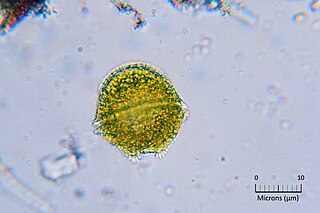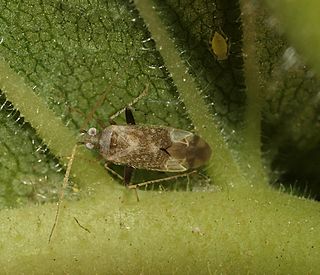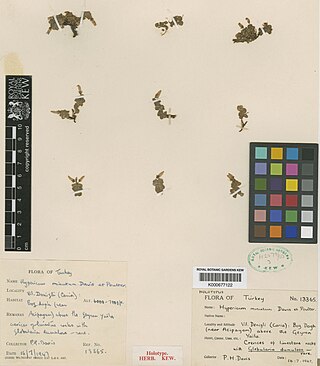
The Cerophytidae are a family of beetles belonging to Elateroidea. Larvae are associated with rotting wood, on which they are presumed to feed. The family contains over 20 species in five genera, primarily distributed in the New World, but also in Eurasia and Africa. 17 fossil species in 7 genera are known extending to the Early Jurassic. Like some other elateroids, the adults are capable of clicking.
Scleronema is a genus of pencil catfishes native to South America. They are a member of the subfamily Trichomycterinae. Species of Scleronema are geographically distributed in the La Plata basin and Atlantic coastal drainages from Southern Brazil, Southern Paraguay, Northeastern Argentina and Uruguay. They inhabit rivers or streams with sand or gravel-bottoms across the Pampa grasslands. In Greek, Scleronema means "hard filament."
Libellulosoma is a genus of dragonfly in family Corduliidae. The genus is closely related to the genera Pentathemis and Aeschnosoma. The only species is Libellulosoma minutum. It is endemic to Madagascar.

Epilobium minutum is a species of willowherb known by the common names little willowherb, chaparral willowherb and desert willowherb. It is also called "smallflower willowherb" in reference to its small size relatively. However that name, in particular the British English variant "small-flowered willowherb", typically refers to Epilobium parviflorum.
The phylum Elusimicrobiota, previously known as "Termite Group 1", has been shown to be widespread in different ecosystems like marine environment, sewage sludge, contaminated sites and soils, and toxic wastes. The high abundance of Elusimicrobiota representatives is only seen for the lineage of symbionts found in termites and ants.

Micromelum minutum, commonly known as limeberry, dilminyin. kimiar margibur, tulibas tilos (Philippines), sesi (Indonesia) and samui (Thailand), is a species of small tree or shrub in the citrus plant family Rutaceae. It occurs from India and Indochina to Australia. It has pinnate leaves with egg-shaped to lance-shaped leaflets, hairy, pale green or creamish, scented flowers arranged in large groups and yellow to orange or red, oval to spherical berries in dense clusters.

Alexandrium is a genus of dinoflagellates. It contains some of the dinoflagellate species most harmful to humans, because it produces toxic harmful algal blooms (HAB) that cause paralytic shellfish poisoning (PSP) in humans. There are about 30 species of Alexandrium that form a clade, defined primarily on morphological characters in their thecal plates.
Eosentomon minutum is a species of proturan in the family Eosentomidae. It is found in Africa.

Compsidolon is a genus of plant bugs in the family Miridae. There are more than 60 described species in Compsidolon.
Cryptorama is a genus of death-watch and spider beetles in the family Ptinidae. There are more than 20 described species in Cryptorama.
Isodacrys is a genus of broad-nosed weevils in the beetle family Curculionidae. There are 20 described species in Isodacrys, ranging from the southern United States of America to Honduras.
Cryptopleurum subtile is a species of water scavenger beetle in the family Hydrophilidae. It is found in Europe and Northern Asia, North America, and Southern Asia.

Cryptopleurum is a genus of water scavenger beetles in the family Hydrophilidae. There are about 11 described species in Cryptopleurum.
Nephasoma minutum is a marine invertebrate of the phylum Sipuncula, commonly known as peanut worms because of their shape when contracted. It is a cylindrical, unsegmented worm with a crown of tentacles around the mouth. These worms live in crevices in the rocks or in burrows in shallow water in Western Europe, and the eastern United States.

Hypericum sect. Adenosepalum is one of 36 sections in the genus Hypericum. Its type species is Hypericum montanum.

Hypericum sechmenii, or Seçmen's St John's wort, is a rare species of flowering plant of the St John's wort family (Hypericaceae) that is found in the Eskişehir Province of central Turkey. It was first described in 2009 by Turkish botanists Atila Ocak and Onur Koyuncu, who named the species in honor of Özcan Seçmen, a fellow botanist. They assigned the species to the genus Hypericum, and Norman Robson later placed H. sechmenii into the section Adenosepalum.

Hypericum huber-morathii is a species of flowering plant in the St John's wort family Hypericaceae. It is a small perennial herb with few stems. It has narrow and brittle stems, thick leaves, flowers in clusters of varying numbers, small yellow petals, around twenty stamens, and three styles. H. huber-morathii is closely related to H. minutum and H. sechmenii, and also shares characteristics with H. lanuginosum. The plant is endemic to Turkey, and is found among limestone rocks in a limited region of southwestern Anatolia. Originally excluded from a comprehensive monograph of Hypericum, the species' placement within the genus is unclear. It has been placed in both section Adenosepalum and section Origanifolium.

Crepidomanes minutum is small fern in the filmy fern family which grows throughout the Pacific. It is commonly referred to as tiny bristle fern. The specific epithet 'minutum' means small in Latin, referring to the small fronds

Hypericum minutum is a species of flowering plant in the St John's wort family Hypericaceae. It is a small perennial herb that grows in tufts. It has slender and brittle stems, flowers in clusters of one to three, yellow petals with black and amber glands, few stamens, and a seed capsule with narrow grooves. H. minutum is closely related to H. huber-morathii and H. sechmenii and resembles a smaller form of the latter plant. The plant is endemic to Turkey, and is found among limestone rocks in a limited region of southwestern Anatolia. Originally excluded from a comprehensive monograph of Hypericum, the species' placement within the genus is unclear. It has been placed in both section Adenosepalum and section Origanifolium.











